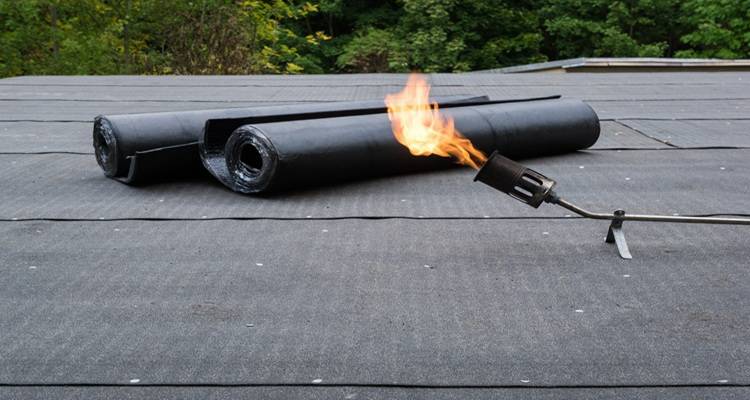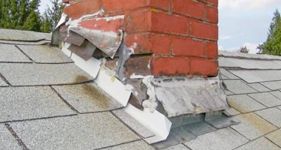How to Replace Roof Tiles
Are you looking for information on how to replace broken roof tiles?
This step by step guide covers how to replace common broken interlocking roof tiles (the most common roofing material in the UK), what tools you'll need, and more!
Let's get started below.
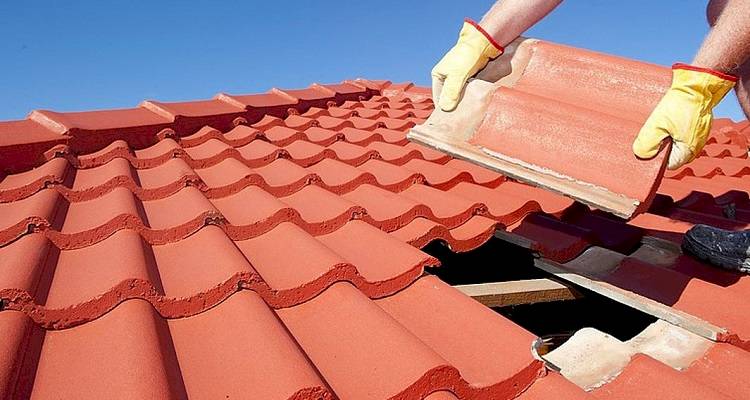
Table of Contents
What Tools and Materials Do I Need to Replace Roof Tiles?
Replacing roof tiles can be a simple task if you're kitted out with the right tools.
Here's a list of the tools and materials that will make replacing a roof tile much easier:
- Roof ladder or extension ladder. Always secure it on level ground and ideally have someone with you to hold it in place.
- Hammer or roofing hammer. Useful for loosening nails or adjusting tiles back into place
- Crow bar. For lifting overlapping tiles and gently removing nailed down pieces.
- Replacement roof tiles. Make sure they match the type, size and style of existing tiles e.g. concrete or interlocking.
- Galvanised nails. For securing tiles more firmly, especially in exposed areas prone to damage from strong winds.
What Safety Equipment Do I Need to Replace Roof Tiles?
Working at height is dangerous. Even if you're only replacing a single broken tile, you need to take the risk it poses very seriously. The right safety equipment can reduce the risk of falls, slips, and injuries.
Below is a list of recommended roofing safety equipment that can help keep you safe when used properly:
- Roof ladder with stabiliser. This ensures safe and stable access to the roof.
- Ladder tie offs. Prevents movement while climbing the ladder or when working.
- Roof harness and safety line. Especially important for steep or high roofs to protect against falls.
- Safety gloves. To protect the hands from sharp tile edges and rough surfaces.
- Non-slip footwear. Roofing can be slippery so sturdy grip is essential.
How to Prepare for Replacing Roof Tiles
Good preparation is essential before starting any type of roof repair project:
- Inspect the damage from the ground as far as you can.
- Check the weather forecast to make sure there's no strong winds or heavy rain due for the duration of the work.
- Clear the work area below. Move garden furniture, bins or vehicles to avoid damage if there's any falling debris.
How to Replace Roof Tiles - Step by Step Guide
Below is a step-by-step guide on how to replace tiles on a roof:
Step 1
Once you're safely on the roof, begin to carefully lift the broken tiles out of their place to make a space for the replacement roof tiles.
Removing your old roof tiles is quite simple. Lift away any overlapping tiles that may be holding the broken tile in place and, once it’s free, lift away the broken tile from the roof.
If your tiles are nailed down, you may need to use a pry bar to lift the overlapping pieces and remove the nail before you can push them out of the way to free the broken piece.
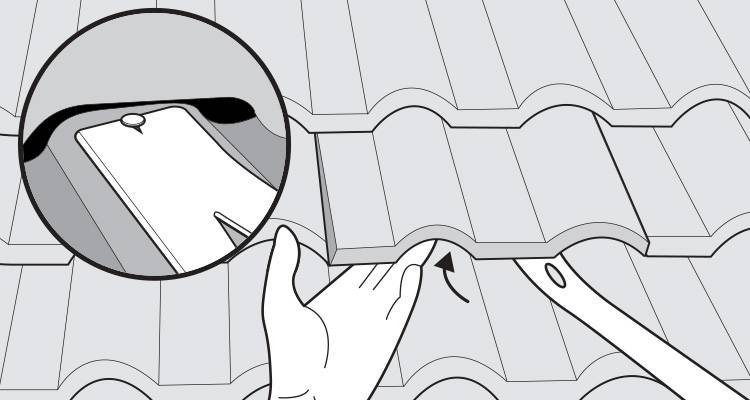
Step 2
Slide the replacement tile into the space, making sure it aligns correctly with the neighbouring tiles. The tile should sit flush with the roofline and overlap as intended. This ensures a watertight seal.
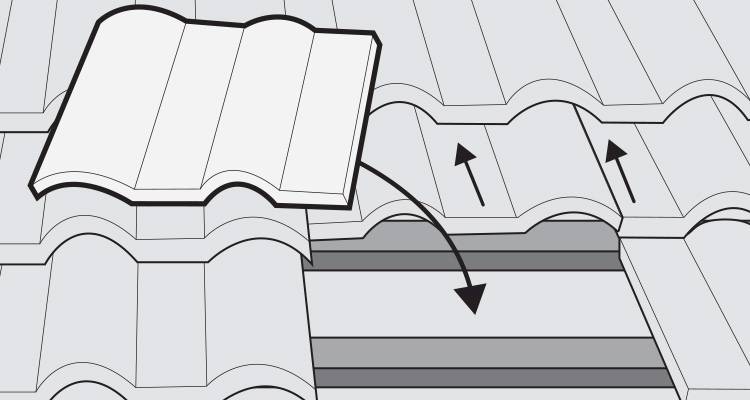
Step 3
Once you have put the new tile in place, you will need to secure it by replacing the overlapping tiles to their correct position. To do this, use a hammer to lift the overlapping tiles slightly and then you can pull them back into their correct place.
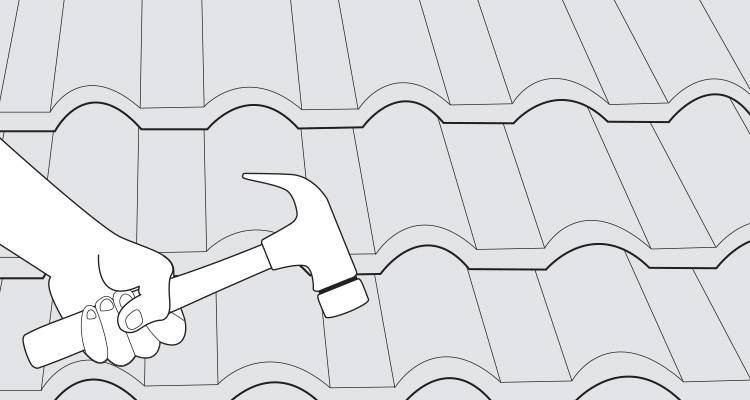
Step 4
This step is optional.
If you would like to secure your roof tiles further, you can nail your new tile into place using a hammer. This is beneficial if the replacement tile is in an area of the roof exposed to the elements such as high winds.
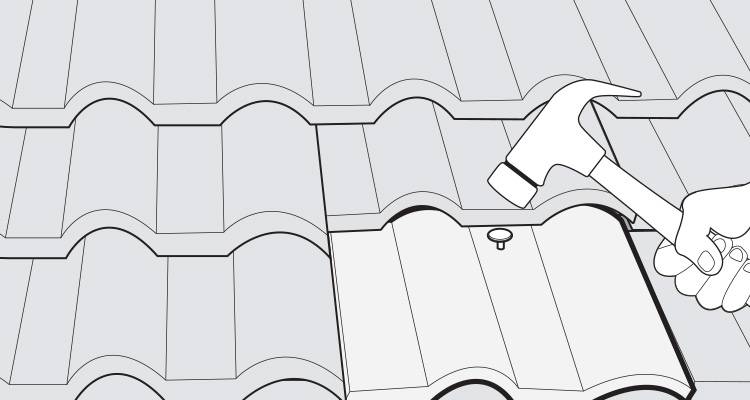
Types of Roof Tiles
Choosing the best roof tile is important for both the look of your home and its long term performance.
Roof tiles in the UK are typically made from clay or concrete, with many available in a variety of styles and colours to suit different budgets and property types.
Below is an overview of the most common roof tile types, with their pros, cons and key considerations:
Clay Tiles
Natural clay tiles are beautiful as they retain their natural colour before maturing into a darker, richer shade. The rate of this colour change depends on the manufacturer of the tiles and the environment in which your house resides. Clay tiles tend to vary in colour and this can be very aesthetically pleasing. Clay tiles tend to be quite durable and are known to last a long time.
PROS
✔ Durable
✔ Beautiful colours
✔ Natural
CONS
✖ Colour may deteriorate over time
Concrete Roof Tiles
Concrete tiles are usually surface treated which means they are protected as best possible from any potential environmental deterioration. Concrete tiles tend to be coloured depending on your preferences. Unfortunately, though, the colours can usually deteriorate over time. The treatment used on concrete tiles usually ensure that they have a nice long life. The protective coating minimises dust, moss, dirt, and contamination.
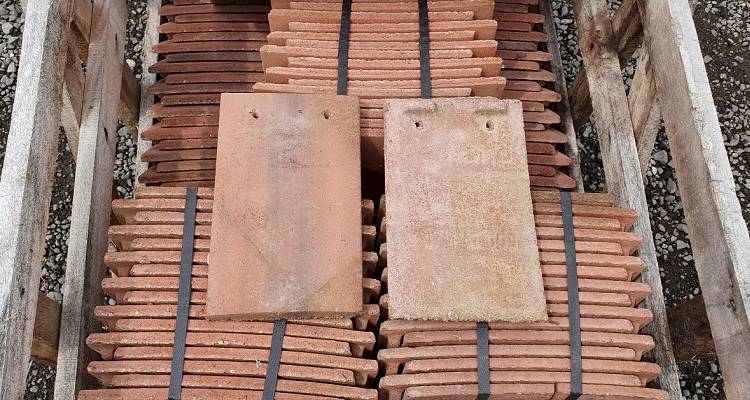
PROS
✔ Last a long time
✔ Benefit from protective coating
✔ Can be coloured based on your preferences
CONS
✖ Colours tend to fade rapidly
Interlocking Roof Tiles
These types of tiles tend to be the quickest and easiest types of tile to install on your roof. They also benefit from costing less than most other tile types. This is why these types of tile are among the most popular types of roofing tile in the UK. Interlocking roof tiles are usually made from concrete and so can also be coloured based on your preferences.
PROS
✔ Quick and easy to install
✔ Low costs compared to other types
✔ Can be coloured based on your preferences
CONS
✖ Coloured tiles can fade quite quickly
Large Format Roof Tiles
These types of tiles are larger than other types and so the installation time is much quicker and less fiddly. The larger tiles also require less weight and support from underneath. These tiles can come in both clay or concrete varieties and have the benefit of coming in a number of different styles and designs. These can include various colours, textures, and finishes.
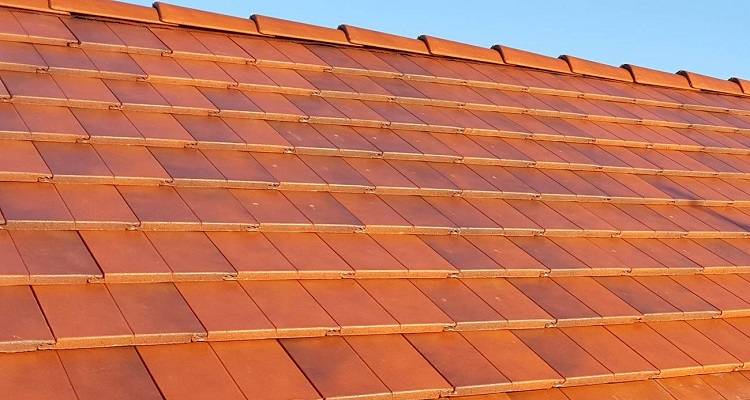
PROS
✔ Can be installed quickly
✔ Require less weight and support from underneath
✔ Come in a variety of designs, textures, and colours
✔ Modern looking
CONS
✖ Colours and patterns can deteriorate or fade over time
Plain Roof Tiles
Plain roof tiles have a pleasing traditional look to them. They can be made of concrete or clay. The compact size of plain tiles allows them to be double lapped which means that their density is increased to protect the interior of your home from water or leaks. These types of tiles tend to take a little longer to install than interlocking types.
PROS
✔ Traditional aesthetic
✔ Can come in a variety of colours
✔ Offer great protection from water leaks
CONS
✖ Usually take longer to install than other tile types




